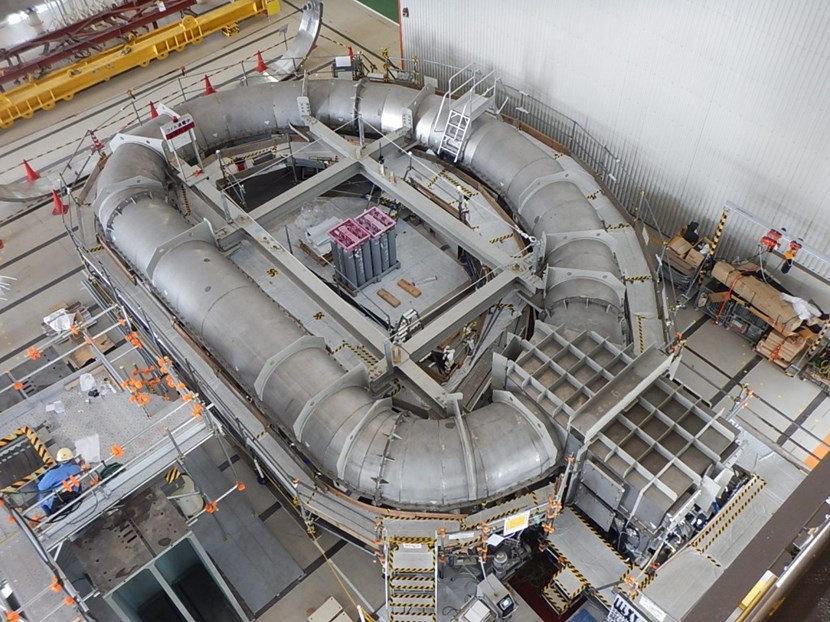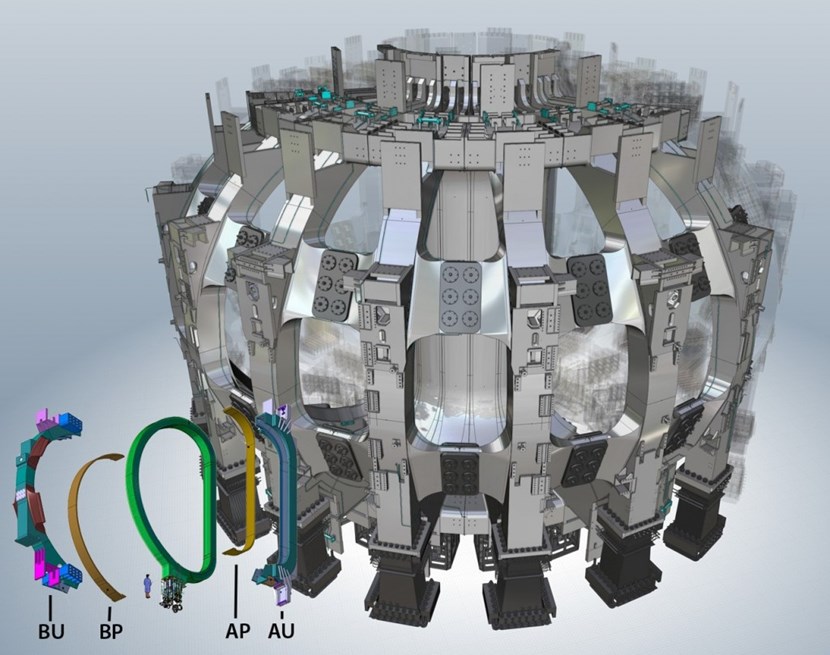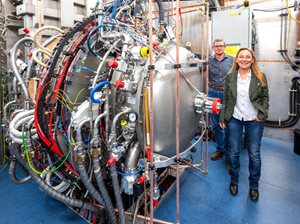
The first Japanese winding pack was cold tested in October in this purpose-built cryogenic chamber at Mitsubishi. In a final step before shipment to ITER, the winding pack will be inserted in its structural case.
Eleven years after completing the signatures on documents specifying technical and quality control requirements for the supply of nine toroidal field coils, the Japanese Domestic Agency is overseeing the last, spectacular sequences on its first production unit.
The toroidal field coils are the ITER magnets responsible for confining the plasma inside the vacuum vessel using high-performance, internally cooled superconductors called CICC (cable-in-conduit) conductors. Following the completion of the single largest
superconductor procurement in industrial history, fabrication of the final coils is proceeding in Japan (9 toroidal field coils plus 10 coil structures to be sent to Europe) and Europe (10 toroidal field coils). Each coil is made up of a superconducting winding pack and surrounding stainless steel coil case.
The list of applicable superlatives is long—the toroidal field coils are the largest and most powerful superconductive magnets ever designed, with a stored magnetic energy of 41 GJ and a nominal peak field of 11.8 T. Together they weigh in at over 6,000 tonnes including
superstructure, representing 60 percent of the magnetic array on the machine and over one-fourth of the Tokamak's total weight. They require 4.57 km of conductor per coil wound into 134 turns in the central core, or winding pack, of the magnet. And they have required the longest procurement lead-time of any ITER component, with six out of seven ITER Members involved in the production of 500 tonnes of niobium-tin superconducting strand (100,000 km) required for the toroidal field superconducting cables.

In the insert, the different elements of the toroidal field coils are shown: the superconducting winding pack (in green), and the inner (BP, AP) and outer (BU, AU) coil case sub-assemblies. QST—with the cooperation of Mitsubishi Heavy Industries, Ltd., Mitsubishi Electric Corporation, Hyundai Heavy Industries, and Toshiba Energy Systems & Solutions Corporation—will supply 9 toroidal field coils (assembly of winding packs and coil structures) plus another 10 coil structures to the ITER Project.
The 







